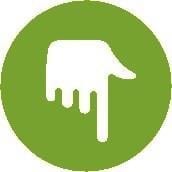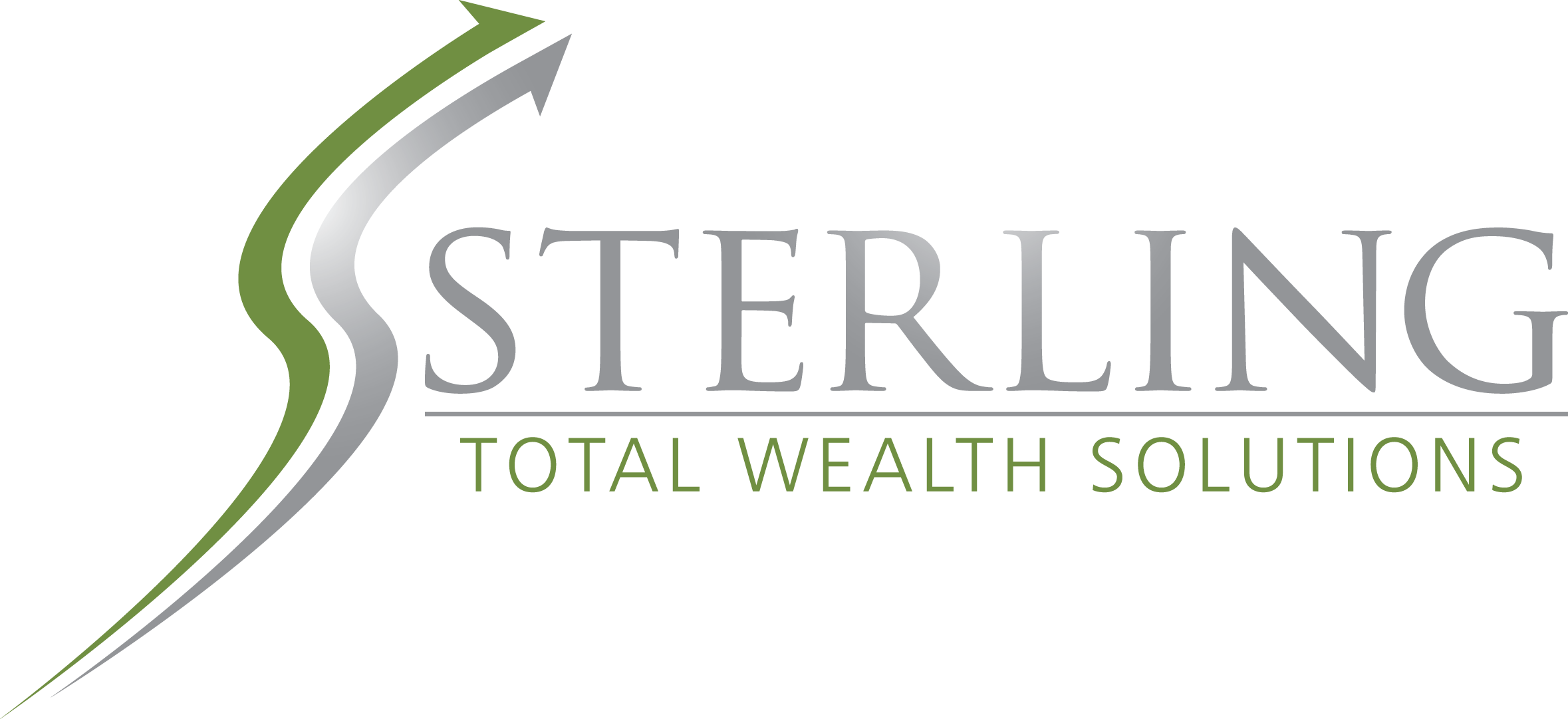In this month’s recap: Stocks rallied, fueled by an improving labor market, strong corporate earnings, and clarity on Fed tapering plans.
Monthly Economic Update
Monthly Economic Update | Presented by Sterling Total Wealth Solutions | September 2021
Click here to receive Economic Updates in your Inbox: Subscribe
U.S. Markets
Signs of an improving labor market, strong corporate earnings, and more clarity from the Fed on its tapering plans propelled stocks to multiple record highs during August.
The Dow Jones Industrial Average gained 1.22 percent while the Standard & Poor’s 500 Index rose 2.90 percent. The Nasdaq Composite led, picking up 4.00 percent.1
Corporate Earnings
Corporate profits in the second quarter were by all measures exceptional. With 98 percent of companies in the S&P 500 index reporting, 89 percent beat Wall Street consensus estimates by an average of 17.7 percent. The companies posted an earnings-per-share growth of nearly 92 percent over the second quarter of 2020.2
The labor market also showed signs of improving health, providing evidence that the economic recovery remained intact. In August, jobless claims reached pandemic lows, while employers added 953,000 jobs in July, and job openings reached record levels.3
Fed at Center Stage
In the final days of trading, Fed Chair Jerome Powell stated that the Fed might begin to pare back its monthly bond purchases before year-end. Powell’s update followed multiple comments from regional Federal Reserve Bank presidents indicating their support for reducing bond purchasing. It’s important to note that Powell said that tapering should not be seen as an indicator of future changes in interest rates.4
COVID Worries
The month was not without its worries. The global spread of the Delta variant resulted in flashes of investor anxiety that led to temporary pullbacks in stock prices. New COVID-19 cases in the U.S. rose throughout August, raising concerns that spreading infections could derail the economic recovery.5
In Asia, outbreaks closed some shipping ports. Vietnam partially halted manufacturing, and Japan extended its lockdown protocols. These actions raised concerns about their supply chain impact and what it may mean for inflation and economic growth.
Sector Scorecard
For the second straight month, energy was the only industry sector under pressure. Energy lost 1.34 percent in August. Otherwise, gains were posted in Communication Services (+3.52 percent), Consumer Discretionary (+1.54 percent), Consumer Staples (+0.83 percent), Financials (+5.28 percent), Health Care (+2.45 percent), Industrials (+1.39 percent), Materials (+2.19 percent), Real Estate (+2.20 percent), Technology (+4.1 percent), and Utilities (+4.02 percent).6
What Investors May Be Talking About in September
Since the early days of the pandemic, Fed Chair Jerome Powell has maintained that accommodative monetary policies would remain unchanged until the economy recovered. He’s been clear that the Fed would be very transparent in communicating monetary policy changes well ahead of implementing them to allow the capital markets sufficient time to digest any change.
Comments by a number of Federal Reserve Bank regional presidents last month may have heralded the beginning of a communication plan.
First, the Federal Reserve Banks of Atlanta and Richmond made comments, suggesting that the time to begin tapering was nearing. This was followed days later by remarks from the Federal Reserve Banks of Dallas and Kansas City, indicating that the economy had progressed enough to commence tapering as early as October.7,8
Talk of tapering grew louder with the August 18th release of the FOMC (Federal Open Market Committee) meeting minutes, suggesting that the Fed may be ready to scale back its bond purchases before year-end.
Finally, a speech by Fed Chair Jerome Powell near the end of the month confirmed that the Fed was getting closer to the start of tapering. Powell indicated that tapering could begin before year-end in his prepared comments, though he cautioned against connecting tapering with an interest rate hike.9
For many market observers, the Fed appears to be signaling that its September meeting may lead to changes in language and policy. The two-day meeting ends on September 22nd.
World Markets
A strong U.S. equity market helped push international stocks higher, with the MSCI-EAFE Index advancing 1.60 percent in August.10
In Europe, Germany tacked on 1.87 percent, the U.K. added 1.24 percent France picked up 1.02 percent.11
The Pacific Rim markets were mixed. Japan rose 2.95 percent and Australia rose 1.92 percent. But China’s Hang Seng index and Korea’s KOSPI edged lower.12
Indicators
Gross Domestic Product: The pace of economic growth in the second quarter was revised upward slightly, from 6.5 percent to 6.6 percent annualized rate.13
Employment: Employers added 943,000 new jobs in July—the biggest jump since August 2020. The unemployment rate fell to 5.4 percent, down from June’s 5.9 percent rate.14
Retail Sales: Retail sales cooled in July, falling 1.1 percent, led by a decline in auto purchases. Retailers attributed the weakness to the spread of the Delta variant.15
Industrial Production: Output at the nation’s factories, mines, and utilities rose 0.9 percent, led by a 1.4 percent rise in manufacturing production. July’s result topped the consensus estimate of a 0.5 percent increase.16
Housing: Housing starts slid 7.0 percent as challenges with land, labor, and materials persisted.17
Existing home sales rose 2.0 percent as limited inventory and strong demand drove the median price higher by nearly 18 percent to $359,900 from July 2020.18
For the first time in four months, new home sales rose, increasing 1.0 percent as the median sales price jumped 18.4 percent to a record level of $390,500.19
Consumer Price Index: Consumer prices climbed at their fastest rate since 2008, rising 0.5 percent in July and by 5.4 percent year-over-year.20
Durable Goods Orders: New orders of goods designed to last three years or more declined 0.1 percent in July, dragged down by a nearly 50 percent drop in nondefense aircraft and parts.21
TIP OF THE MONTH

If you’re shopping for a homeowner policy, feel free to ask for a discount. If you can demonstrate that you are taking steps to manage risk, you may be able to negotiate one.
The Fed
Minutes from the July 27-28 FOMC meeting revealed that some appeared ready to slow the pace of monthly bond purchases by the end of the year.22
“Various participants commented that economic and financial conditions would likely warrant a reduction in coming months,” according to the minutes.
“Several others indicated, however, that a reduction in the pace of asset purchases was more likely to become appropriate early next year because they saw prevailing conditions in the labor market as not being close to meeting the Committee’s ‘substantial further progress’ standard or because of uncertainty about the degree of progress toward the price-stability goal.”23
|
MARKET INDEX |
Y-T-D CHANGE |
August 2021 |
|
DJIA |
15.53% |
1.22% |
|
NASDAQ |
18.40% |
4.00% |
|
S&P 500 |
20.41% |
2.90% |
|
|
||
|
BOND YIELD |
Y-T-D |
August 2021 |
|
10 YR TREASURY |
0.38% |
1.30% |
Sources: Yahoo Finance, August 31, 2021.
The market indexes discussed are unmanaged and generally considered representative of their respective markets. Individuals cannot directly invest in unmanaged indexes. Past performance does not guarantee future results. U.S. Treasury Notes are guaranteed by the federal government as to the timely payment of principal and interest. However, if you sell a Treasury Note prior to maturity, it may be worth more or less than the original price paid.
QUOTE OF THE MONTH

“Perform at your best when your best is required. Your best is required each day.”
JOHN WOODEN
THE MONTHLY RIDDLE

What do the words Potato, Voodoo, Grammar, Revive and Banana have in common?
LAST MONTH’S RIDDLE: An auto dealership sold 150 cars in a special 6-day tent sale offer. Each day the dealership sold 6 more cars than the day before. How many cars were sold on the 6th day?
ANSWER: 40 cars. On the first day, the company sold x cars. On the second day, x + 6, on the third day, x + 12, on the fourth day, x + 18, on the fifth day, x + 24, and on the sixth day, x + 30. If you add all the days together you get the equation: x + (x + 6) + (x + 12) + (x + 18) + (x + 24) + (x + 30) = 150 cars sold. 6x + 90 = 150 and so x = 10. So, on day 6 (x + 30) = 40.
Securities offered through Registered Representatives of Cambridge Investment Research, Inc., a Broker/Dealer, Member FINRA/SIPC. Advisory services offered through Cambridge Investment Research Advisors, Inc., a Registered Investment Advisor. Sterling Total Wealth Solutions and Cambridge are not affiliated.
To learn more about Sterling Total Wealth Solutions, visit us on the web at www.sterlingtotalwealthsolutions.com
Know someone who could use information like this? Please feel free send us their contact information via phone or email. (Don’t worry – we’ll request their permission before adding them to our mailing list.)
CITATIONS:
- WSJ.com, August 31, 2021
- Twitter.com/EarningsScout, August 26, 2021. 490 companies S&P 500 companies reported through August 26.
- WSJ.com, August 26, 2021
- WSJ.com, August 27, 2021
- CDC.gov, August 27, 2021
- Sectorspdr.com, August 31, 2021
- Reuters.com, August 9, 2021
- WSJ.com, August 11, 2021
- WSJ.com, August 27, 2021
- MSCI.com, August 31, 2021
- MSCI.com, August 31, 2021
- MSCI.com, August 31, 2021
- CNBC.com, August 26, 2021
- WSJ.com, August 6, 2021
- WSJ.com, August 17, 2021
- MarketWatch.com, August 17, 2021
- Bloomberg.com, August 18, 2021
- WSJ.com, August 23, 2021
- Bloomberg.com, August 24, 2021
- WSJ.com, August 11, 2021
- WSJ.com, August 25, 2021
- WSJ.com, August 18, 2021
- FederalReserve.gov, July 28, 2021
